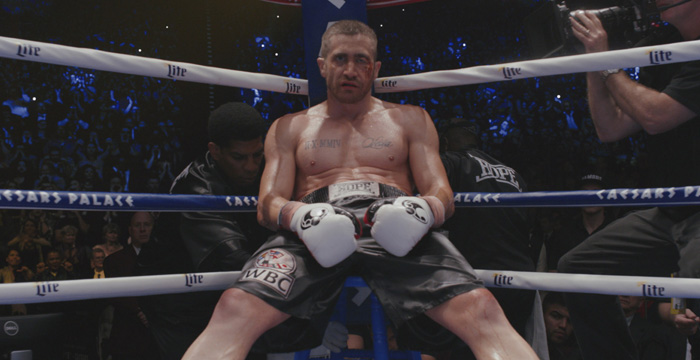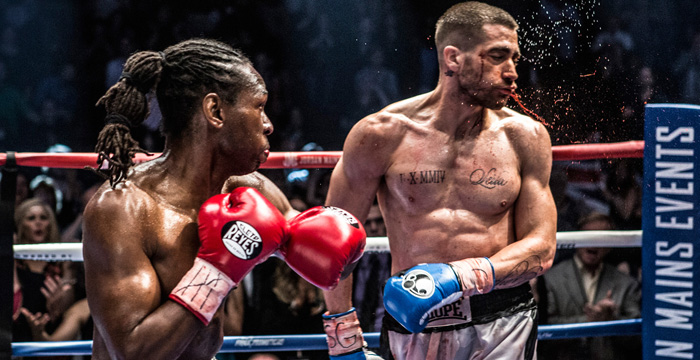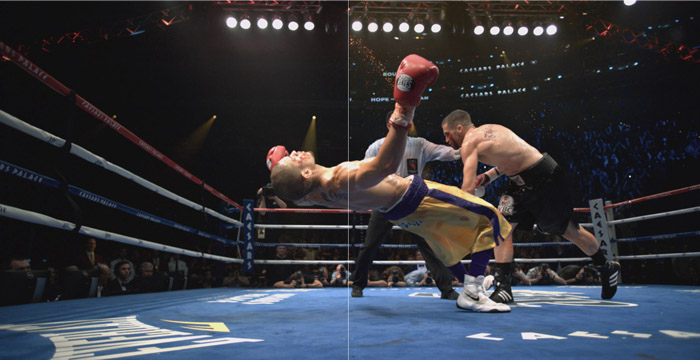VFX is not just about creating things larger than life but it’s also about giving out the minute detailing and effects that enhance the final output of the film. Visual effects assist to make the film more effective but at the same time have to keep it realistic. And there is always a slight margin between maintaining the reality of the scenes and making it artificial, with heavy VFX. This margin was well maintained in the sports drama feature Southpaw, where Zero VFX delivered the visual effects for the film following the basic principle of ‘Keep it real but effective with visual effects’.
Directed by Antoine Fuqua, Southpaw starring Jake Gyllenhaal is based on the story of a professional boxer who fights the battle of revenge for life in the boxing ring. And a story like this which has fight scenes at its crux required simple yet intense effects to make the fight look real.
Zero VFX, the studio behind The Equalizer and Fury, stepped into the ring to deliver over 500 visual effects shots for this film in terms of creating 3D stadium environments, substantially re-animating and re-timing actor performances for majority of the boxing matches, and blood and wound enhancements to enhance the realism and violence of the fighting.

Everything shot real-time…
As the film had a number of fight scenes, the boxing choreography wasn’t set up shot-by-shot, but rather round-by-round. The production shot three rounds at a time using 15 different cameras. Zero VFX, supervisor, Sean Devereaux recollects, “The actors would do a round, go and sit in their corners, do the lines they had to do, then get back up and keep boxing, all while the cameras continued to roll. We weren’t working with specifically designed shots, where we stop the action to cut to inserts or cutaways for cool punches. It was all in real-time.”
The benefit of filming each of Southpaw’s bouts in this style was that it allowed Fuqua to communicate the visceral nature of the fights and the emotional arc of the characters: the actors didn’t need to pretend they were tired, they were actually tired. Devereaux adds, “It made things more challenging, for sure, but we never want to limit the director in their ability to shoot the way they want to.”
No Green screen used…
When we hear of VFX, the first thing that springs up in our mind is the use of green screen but surprisingly not a single green or blue screen was put up for Southpaw as Fuqua was not limited to any specific angle. However, Zero did use highly detailed LiDAR scans and set survey data to compensate for the lack of tracking markers and shaky, hand-held camera movement.
The team at Zero VFX studied many boxing fights, examined the crowd for their reactions and analysed the fighters’ punches to understand the motions and ways in which their heads and bodies respond to getting hit.
Devereaux states, “It made putting the crowds into the background – although quite typical in VFX these days – more challenging, because we couldn’t control any of that structure on set. Nevertheless, this approach to visual effects meant that Fuqua could shoot the film exactly the way he wanted to, while still delivering all of the final impact. The VFX supported the concept of the film, rather than defining it.”

Re-time and re-animate actors…
The impact of punches was achieved using a variety of different techniques, from 2D paint work and warping – using which Zero would extend a boxer’s arm, bend their glove upon impact, and warp the recipient’s jaw – all the way up to full CG replacements of gloves and arms.
“Every punch thrown connects with the other fighter, makes contact with their face, warps it, and spit and blood are ejected. We would sometimes completely move a boxer, take them out of the frame, or move them closer to their opponent because they were too far away,” he explains.
While acting out a boxing scene, the actors would react differently each time as the intensity would either increase or decrease. The physical parts like head, hands, legs, wrists and the sensory organs move in a varied way. He adds, “We also had to do a lot of head adjustments – if you get hit by a jab in professional boxing, the head barely moves, but sometimes the actor in question would react slightly too much. We had to limit the movement so it looked a little more realistic.”
Creating the background…
The footage was filmed on a set, not on location, so the structure of the stadiums (both Caesars Palace and Madison Square Garden) was constructed and the seating, barriers, luxury box seats, jumbotron, and banners were added.
“The stadiums were full CG build, right up into the rafters and the luxury boxes. We also created the crowds at each level of the stadium by using 2D and 3D systems, the lighting – everything outside of that central ring,” he explains.
These hand-built stadiums were created using the LiDAR scans and photography reference of the actual locations, allowing the Zero team to map their extensions with absolute precision. The crowd’s energy had to match the story and connect seamlessly with the surrounding shots. Consequently, as a fight progresses, you can see the crowd’s energy increase, as well as their cheering and flag waiving in reaction to the various punches.

The final knock-out…
The final fight scene between Billy Hope and Miguel Escobar was the longest of all fight scenes with several punches and huge crowd. It occurred in Caesars Palace; a stadium that doesn’t actually exist so it had to be conceptually created.
This is the fight where minute detailing and prosthetic work came into play. Blood stains were added to the body, face, and gloves to represent the natural progression of a fight. In addition to blood, sweat, spit, and cuts; wounds were added which was a mixture of practical and 3D elements.
With a team of around 50 artists delivering the entire project in 6 months, Zero VFX justifies the use of VFX to make things effective by maintaining the reality alive. Devereaux says, “It was all about making it genuine, making it real. We weren’t trying to make Southpaw more violent by adding big movement to the punches – it had to feel like a real boxing match.” It all defines the basic principle that the ‘VFX supported the concept of the film, rather than defining it’.

